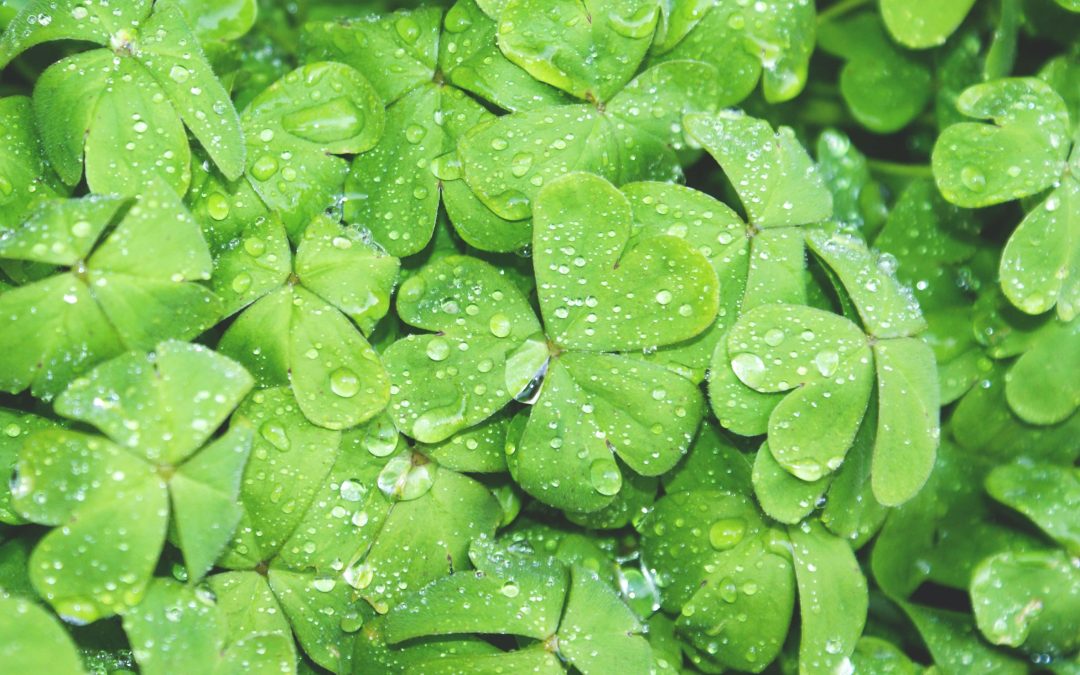With St. Patrick’s Day upon us, there’s going to be a lot of discussion and excitement about how people are going to spend the holiday.
For some people, Saint Patty’s Day is all about wearing green.
For others, it may be all about that traditional corned beef and cabbage soup (with plenty of potatoes to spare).
For others, it may be about engaging in weekend frivolities with friends and loved ones.
But for some, the shamrock itself tends to take center stage.
But why is this particular plant associated with St. Patrick’s Day?
And how can you grow your own in the weeks leading up to the holiday—to really make the most of it?
These are great questions!
Let’s talk about Shamrocks.
The Basics: What Is A Shamrock?
Many people see the shamrock as a three-leaf clover design.
And for the most part, this perspective is consistent with how the shamrock was written about and viewed throughout history.
There are a number of plants that can be associated with the shamrock and its iconic shape.
These include species like:
- Irish clover
- White clover
- Hop clover
- Red clover
- Wood sorrel
Where Did Shamrock Lore Come From?
The shamrock is well known for being a shape that’s associated with traditional holistic medicine and herbalism. It’s even known as a sign of good fortune.
This was especially true during the medieval ages.
Interestingly, the word ‘shamrock’ itself is derived from the term seamair óg, which basically means ‘young clover.’
The very first mention of the shamrock in English literature dates back to 1571. The English Elizabethan scholar, Edmund Campion, described the habits of the ‘wild Irish’ in his book Boke of the Histories of Irelande, and says in the story that the Irish ate shamrocks, among other plants and herbs.
How Was The Shamrock Linked To Saint Patrick?
Traditionally, the shamrock was said to have been used by Saint Patrick to help illustrate the doctrine of the Holy Trinity in the Christian Church.
When Saint Patrick arrived in Ireland in 431, he used it to teach those of the pagan faith about Christianity.
There is no official history that cites the shamrock as being particularly important to the Celts, though there is some speculation that the shamrock (and the plants that bore its shape) may have been associated with the earth—and seen by the Celtic druids as being symbolic of the regenerative powers of nature.
Thus, it makes sense that the saint may have used the plants as a visual aid in connecting the doctrine of the Holy Trinity to the Celtic’s pagan beliefs.
With that being said, St. Patrick is indeed Ireland’s patron saint. And thus, the shamrock has been used as a symbol for Ireland since the 18th century.
Growing Your Own Shamrocks
Thankfully, the climate and environment here in the Ozarks is particularly well suited to many of the traditional ‘shamrock’ species of plants—meaning that you can grow them and enjoy them yourself (or give them as a gift to someone who loves them).
With that being said, shamrocks can be difficult to grow in a pot. So a bit of persistence may be required in order to get the process right.
You’ll start by ordering some seeds or bulbs.
Then, you’ll want to plant them, water them, care for them, and nurture them.
This can be quite a process! But you can read this in-depth guide to growing your own shamrocks to get a birds-eye-view of how to go about it successfully.
Buying Your Own Shamrock Plant
Of course, if growing a plant from scratch doesn’t quite sound like your cup of tea, you can also buy or order an already grown shamrock plant.
Shamrocks are easier to care for than they are to grow from scratch.
If this sounds like a better option, then feel free to contact us here at Linda’s Flowers.
We can definitely help you to sort out the process of finding the best shamrock plant options for your home or space.
We love plants—and we have a particularly soft place in our hearts for beautiful, well-manicured shamrocks (especially for people who take pride in their Irish heritage).
Conclusion
Hopefully, this post has satisfied a bit of your curiosity about shamrocks, where the ‘lore’ comes from, why they’re associated with Saint Patrick’s day, and how you can enjoy your own shamrocks right from the comfort of your own home!
In any case, turn in those shamrock orders quickly, to make sure that you get your plant before the holiday!

